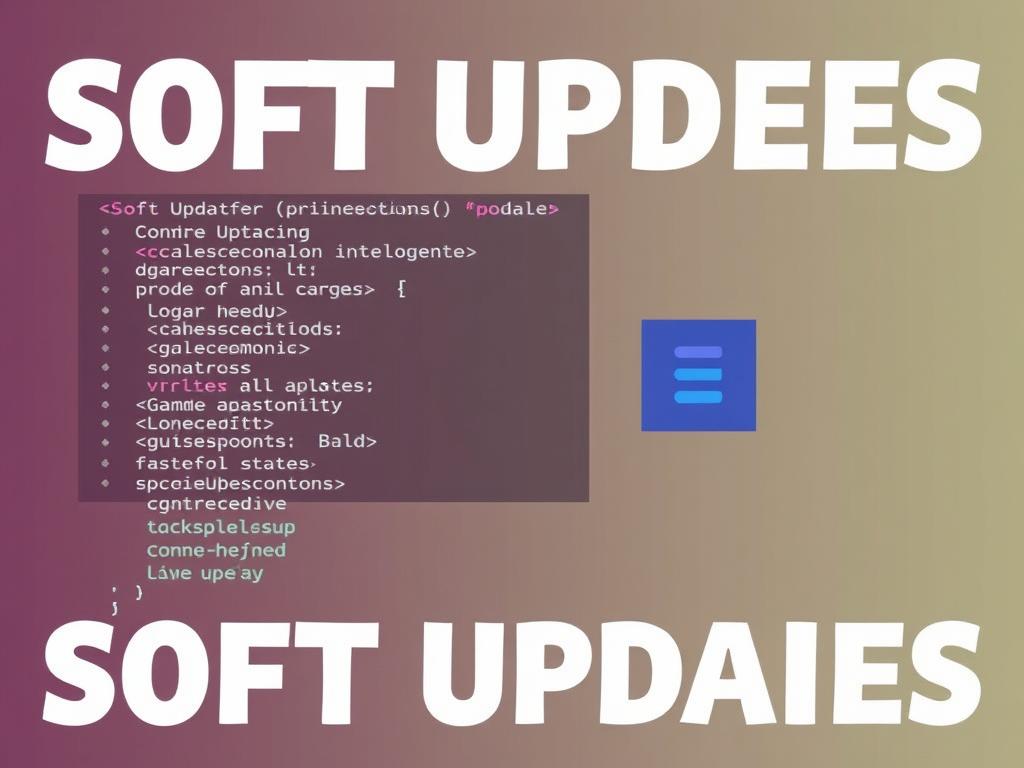In the ever-evolving landscape of online gaming, delivering fresh content and seamless experiences to players is a top priority. Game developers constantly face the challenge of maintaining live services without disrupting gameplay or frustrating their audience with frequent, intrusive updates. That’s where the concept of soft updates comes into play. But what exactly are soft updates, and how do developers implement them in live services? This article will explore the strategies behind soft updates, their benefits, and best practices to keep a game running smoothly while continuously evolving.
Understanding Soft Updates in Live Game Services

First, let’s break down what soft updates mean in the context of gaming. Unlike traditional updates or patches that often require players to download large files, stop playing, and restart their game, soft updates are designed to minimize disruption. They allow developers to push changes, fixes, or new content incrementally and sometimes even while the game is live. This creates a more fluid experience, enabling players to stay engaged without long interruptions.
Soft updates often involve small, modular changes that can be applied dynamically. This could mean tweaking gameplay balance, fixing minor bugs, or enabling new features behind the scenes which activate when certain conditions are met. Live game services benefit immensely from this because developers can respond quickly to player feedback, emerging issues, or seasonal events.
Why Are Soft Updates Vital for Live Games?
Live games, especially multiplayer online games or games-as-a-service, thrive on constant interaction and player retention. The moment a player leaves due to inconvenient downtime or frustrating bugs is a moment lost for the developer. Soft updates help keep the service stable and accessible, even when significant work is being done on the backend.
Some of the key benefits include:
- Reduced Downtime: Players can stay in-game while updates deploy, minimizing frustrating waits.
- Faster Bug Fixes: Developers can quickly patch issues that affect gameplay without waiting for a full update cycle.
- Improved Player Retention: Keeping the game fresh with minimal disruption encourages players to stay engaged.
- Flexible Content Deployment: New content or events can be rolled out in stages, allowing for smoother integration.
How Soft Updates Work Technically

Technically, implementing soft updates requires a robust backend infrastructure and clever design on the client side. Developers often use feature flags, server-driven configurations, and modular architecture to enable or disable elements of the game dynamically.
For example, a developer might push a feature flag indicating a new in-game event is active today. The player’s game client checks this flag and begins showing the event without needing to install a new update. Similarly, balance tweaks can be adjusted by changing parameters on the server, which the game client then retrieves in real time.
Common Methods Used in Soft Updates
| Method | Description | Benefit for Live Services |
|---|---|---|
| Feature Flags | Enable or disable game features remotely without code changes. | Quickly turn features on/off, A/B testing, and controlled rollouts. |
| Hotfixes | Small patches that can be applied without full game restarts. | Rapid bug fixes with minimal player impact. |
| Modular Code Architecture | Breaking game code into independent parts that can be updated separately. | Faster updates and less chance of breaking unrelated systems. |
| Server-Side Configurations | Adjusting game logic and settings from the server in real time. | Dynamic balancing and live adjustments. |
Challenges Developers Face When Using Soft Updates
While soft updates sound like a dream solution, they are not without their challenges. The foremost is ensuring stability. Making live changes can sometimes trigger unforeseen issues that affect players. Testing becomes more complicated because changes are deployed incrementally rather than in a controlled, all-encompassing update.
Another challenge is communication with players. When changes happen softly and progressively, players might feel confused or not realize that something new is available. Developers have to balance keeping players informed without overwhelming them with constant alerts.
Security is also an important concern. If parts of game logic are controlled server-side or pushed via feature flags, a failure in security could lead to exploits or cheating. This necessitates robust safeguards and monitoring.
Best Practices for Implementing Soft Updates in Live Services

To get the most out of soft updates, developers often follow a series of best practices. Here is a useful checklist for teams looking to adopt or improve their soft update process:
- Automated Testing: Rigorous automated tests should cover both the client and server components to catch issues early.
- Gradual Rollouts: Deploy updates progressively to smaller player groups before full release, monitoring feedback actively.
- Clear Player Communication: Inform the community about changes, even if they’re subtle, to manage expectations.
- Robust Monitoring: Use real-time analytics to detect any problems caused by new updates immediately.
- Modular Design Philosophy: Develop code with update flexibility in mind, allowing discrete sections to be changed independently.
Case Study: Soft Updates in Popular Live Games
Many successful games today leverage soft updates to maintain their live services. Take an example from “Fortnite,” which uses server-side configuration and feature flags to introduce new items, game modes, and balance tweaks without forcing lengthy download sessions for its millions of players. This ability to push soft updates keeps the game lively and adaptive to player feedback in nearly real time.
Similarly, games like “League of Legends” utilize hotfixes and modular backend architecture to address bugs and balance changes between major patch cycles. Players benefit from a more stable gameplay experience without the hassle of constant, massive client downloads.
Exploring the Future of Soft Updates
The future promises even more sophisticated use of soft updates as cloud gaming and streaming technologies advance. With cloud platforms, games can update directly on servers with minimal impact on player devices. AI-driven monitoring systems are also improving the detection and automatic rollback of problematic updates, increasing reliability.
Players can expect smoother experiences with less downtime, faster content delivery, and more personalized gaming environments as developers harness new soft update techniques.
Conclusion
Soft updates have become an essential tool in the game developer’s arsenal for managing live services effectively. By enabling incremental, behind-the-scenes changes, these updates dramatically reduce downtime and improve player experience. Although implementing soft updates poses challenges in stability, communication, and security, following best practices and leveraging modern tools can help developers keep their games fresh, balanced, and engaging. Ultimately, the ability to update seamlessly ties directly into player satisfaction and retention, making soft updates a cornerstone of successful live game services in today’s dynamic environment.

